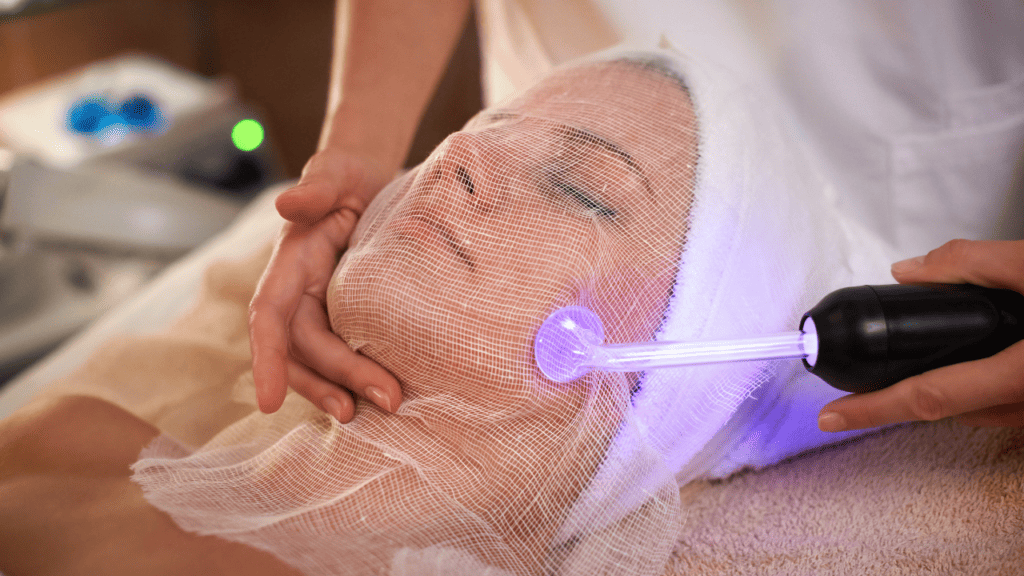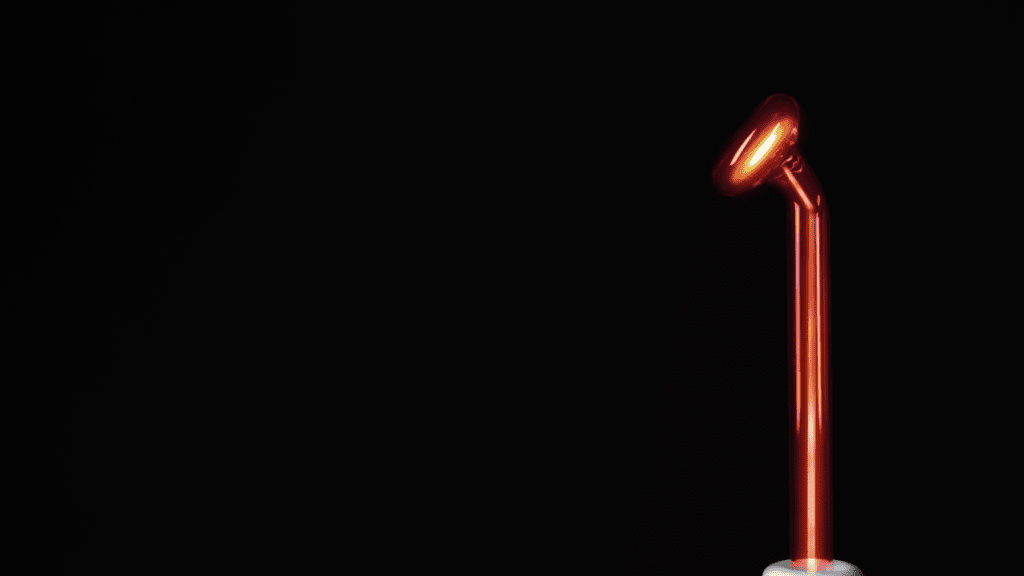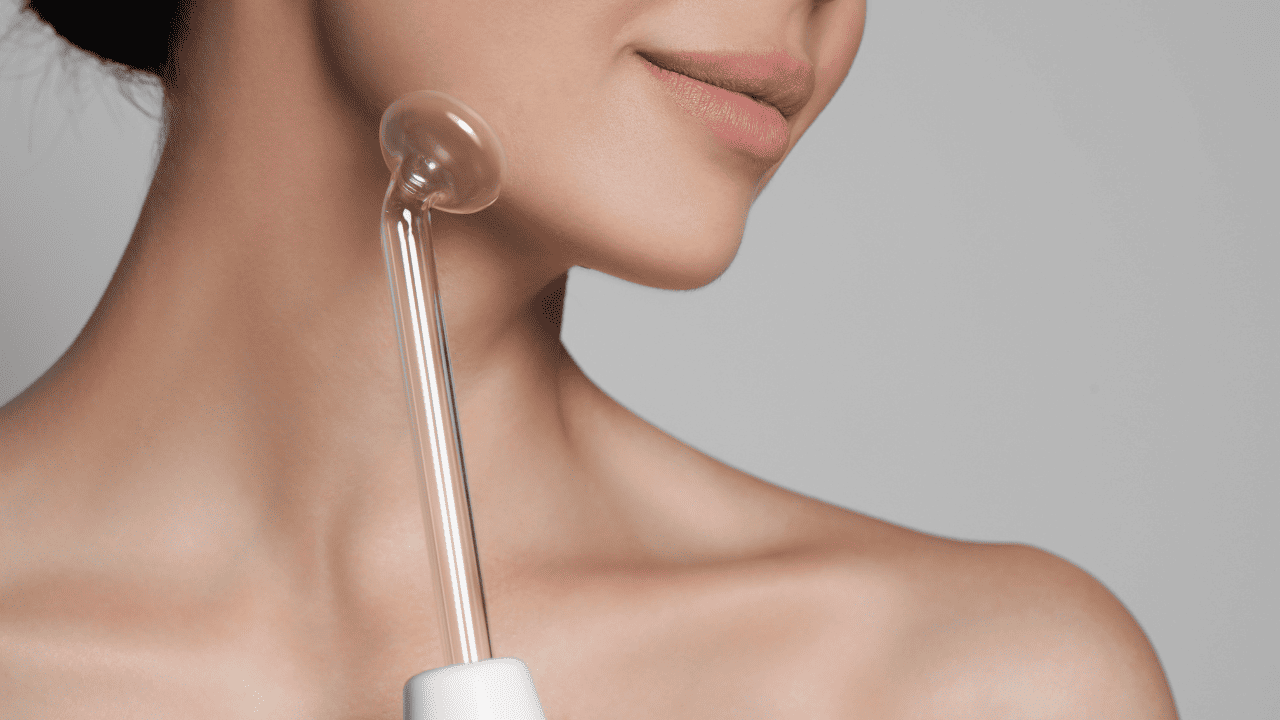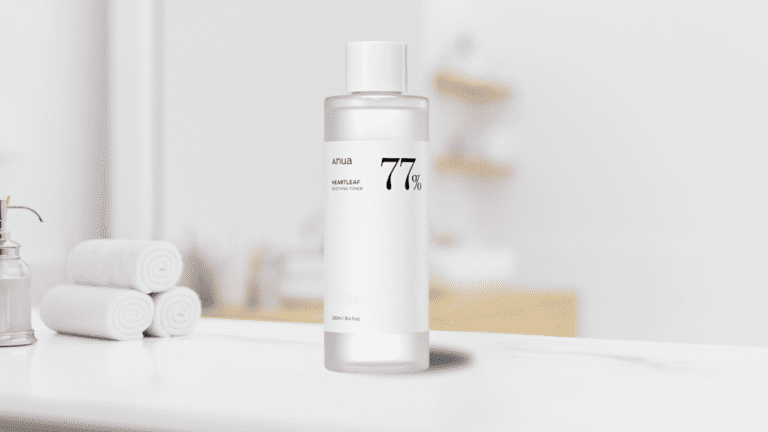High frequency wands have become increasingly popular in the skincare industry for their ability to treat a variety of skin concerns such as anti-aging and killing acne bacteria deep within the skin.
However, many people wonder why these wands make a buzzing sound during use and some might even find it concerning. Not to worry though, the buzzing sound is a result of the high frequency current being emitted from the device. It is after all an electrical device, but let’s deep dive into how exactly it all works.

Understanding High Frequency Wands
High frequency wands work by emitting a low-level electrical current through a glass electrode. This current is typically high frequency and oscillates between four and five million cycles per second. As the current passes through the electrode, it ionizes the air around it, creating a buzzing sound and a faint violet glow.
Clinical Effects and Usage
High frequency wands have been used in the skincare industry for decades due to their ability to treat a variety of skin concerns such as acne, wrinkles, and dark circles. The electrical current emitted by the wand has been shown to increase blood circulation, stimulate collagen production, and kill acne-causing bacteria.
Key Takeaways
- High frequency wands emit a low-level electrical current that ionizes the air around the electrode, creating a buzzing sound and a violet glow.
- These wands have been used in the skincare industry for decades due to their ability to treat a variety of skin concerns, such as acne, wrinkles, and dark circles.
- The electrical current emitted by the wand has been shown to increase blood circulation, stimulate collagen production, and kill acne-causing bacteria.
Understanding High Frequency Wands

Mechanism of Action
High frequency wands work by passing a high-frequency electrical current through a gas-filled glass electrode. This electrical current is low and believed to improve circulation and promote collagen production if it’s neon gas. The most common gases used in high frequency wands are argon and neon. When the electrical current passes through the gas, it creates a plasma field around the electrode, which produces a buzzing sound. The plasma field also generates ozone, which has antibacterial properties and can help to kill acne-causing bacteria.
Components and Types
High frequency wands are composed of two main components: the wand itself and the glass electrode. The wand is typically made of plastic or metal and contains a high-frequency generator, which produces the electrical current. The glass electrode is a hollow tube filled with a gas, such as argon or neon. The electrode is attached to the wand and is used to deliver the electrical current to the skin.
There are different types of glass electrodes available for high frequency wands, each with a different shape and function. For example, the mushroom electrode is used for larger areas of the face, while the comb electrode is used for stimulating hair growth.
Benefits for the Skin
High frequency wands have been used for decades in skin therapy, and are believed to have several benefits for the skin. The electrical current produced by the wand is thought to improve circulation and oxygenation of the skin, which can help to reduce the appearance of fine lines and wrinkles. The ozone produced by the plasma field can also help to kill bacteria and reduce inflammation, making it a useful tool for treating acne-prone skin.
In addition to these benefits, high frequency wands are also used to stimulate hair growth, improve lymphatic drainage, and reduce the appearance of dark circles and puffiness under the eyes. However, it is important to note that high frequency wands should not be used on broken or inflamed skin, or by individuals with certain medical conditions, such as epilepsy or a pacemaker.
Overall, high frequency wands are a popular tool in the world of skin therapy, and are believed to have a wide range of benefits for the skin. By understanding the mechanism of action, components and types, and benefits for the skin, individuals can make informed decisions about whether or not to incorporate high frequency wands into their skincare routine.
Clinical Effects and Usage

Skin Conditions and Treatments
The high-frequency wand is a popular tool used in dermatology to treat various skin conditions. It is particularly effective in treating acne and reducing inflammation caused by bacteria on the skin’s surface. The wand works by producing a high-frequency electrical current that generates oxygen molecules, which then penetrate the skin’s surface and kill bacteria. This process helps to reduce redness, hyperpigmentation, and scarring associated with acne.
Moreover, the high-frequency wand stimulates collagen production and cell renewal, which improves skin tone and reduces the appearance of fine lines and wrinkles. It can also help reduce the appearance of scars and hyperpigmentation by increasing blood flow to the affected area.
Safety and Side Effects
The high-frequency wand is generally safe to use, but like any other medical device, it does have potential side effects. Some people may experience mild irritation or redness after treatment, but this usually resolves within a few hours. It is recommended to avoid using the wand on open wounds or broken skin to prevent infection.
It is also important to note that the high-frequency wand should not be used daily as overuse can lead to skin irritation and dryness. Dermatologists recommend using the wand once or twice a week to achieve optimal results.
Best Practices for Use
To use the high-frequency wand, first, cleanse the skin thoroughly and apply a conductive gel to the treatment area. Then, turn on the wand and gently glide it over the skin’s surface, focusing on the areas with the most significant skin concerns. It is essential to avoid using the wand on the same area for more than a few seconds to prevent skin irritation.
It is also recommended to consult with a dermatologist before using the high-frequency wand, especially if you have sensitive skin or are prone to skin allergies. They can provide personalized guidance on how to use the wand safely and effectively.
Frequently Asked Questions
What causes the buzzing sound when using a high frequency facial wand?
The buzzing sound produced by a high frequency facial wand is due to the rapid oscillation of the wand’s electrode. The electrode produces a high frequency electrical current that creates a buzzing sound as it interacts with the air. The sound is a byproduct of the electrical current and the oscillation of the electrode.
Are there any potential risks associated with the buzzing sound of a high frequency wand?
There are no known risks associated with the buzzing sound produced by a high frequency wand. The sound is a normal byproduct of the electrical current and the oscillation of the electrode. However, users should be cautious when using the wand around sensitive areas, such as the eyes and ears, and should avoid using the wand on broken or irritated skin.
How does the sound intensity of the high frequency wand relate to its effectiveness?
The sound intensity of the high frequency wand does not necessarily relate to its effectiveness. The effectiveness of the wand is determined by the electrical current and the oscillation of the electrode, not the sound produced. However, some users may find that a higher sound intensity is more effective for their specific skincare needs. It is important to follow the manufacturer’s instructions and guidelines when using a high frequency wand to ensure safe and effective use.






